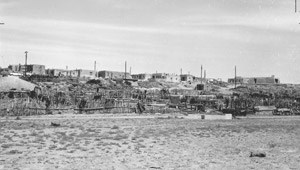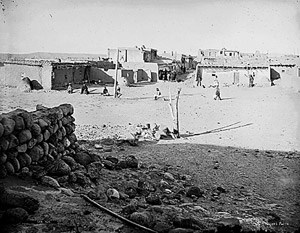
Mission Nuestra Señora de la Asunción
Zia Pueblo, New Mexico
Coordinates: 35.506975, -106.719722
#TravelSpanishMissions
Discover Our Shared Heritage
Spanish Colonial Missions of the Southwest Travel Itinerary

From the Museum Collections of Bandolier National Monument. Courtesy of the National Park Service.

Photo by A.H. Schroeder. Courtesy of the National Park Service.

Photo by John K. Hillers, 1843-1925. Courtesy of the National Archives.

Photographer unknown, Courtesy Palace of the Governors Photo. Archives (NMHM/DCA), 004287
Plan Your Visit
Zía Pueblo is on NM 44, 16 miles northwest of Bernalillo, NM. No cameras, recording or sketching are allowed. The pueblo can be visited daily from dawn to dusk but is closed during some religious ceremonies. For more information call the Zia Pueblo Office of the Governor at 505-867-3304.
Zia Pueblo is listed in the National Register of Historic Places and has been documented by the National Park Service’s Historic American Buildings Survey.
Last updated: April 15, 2016
